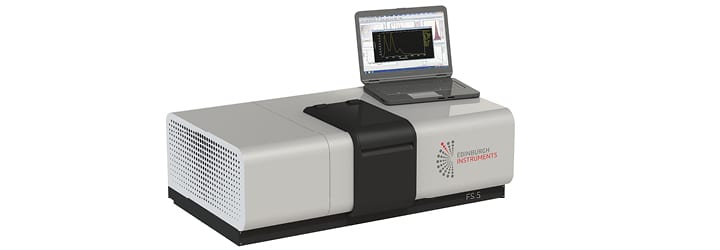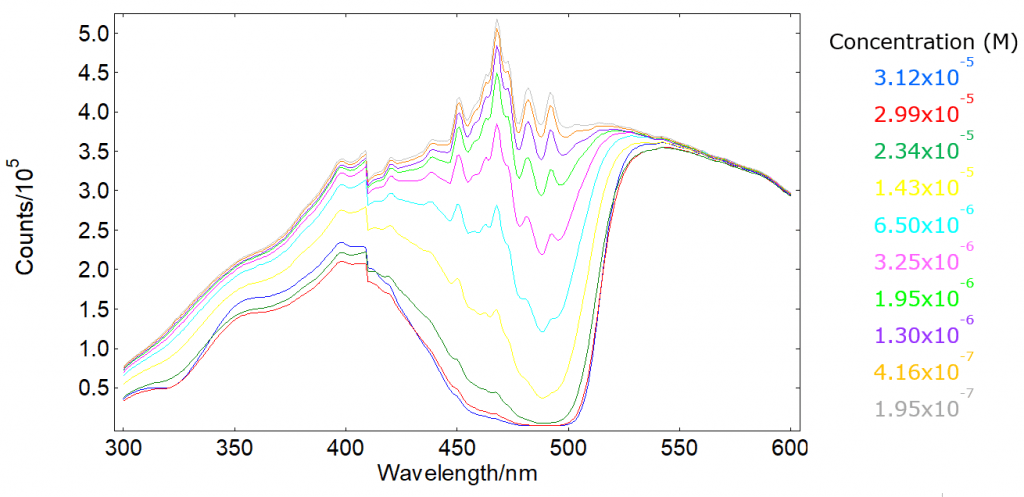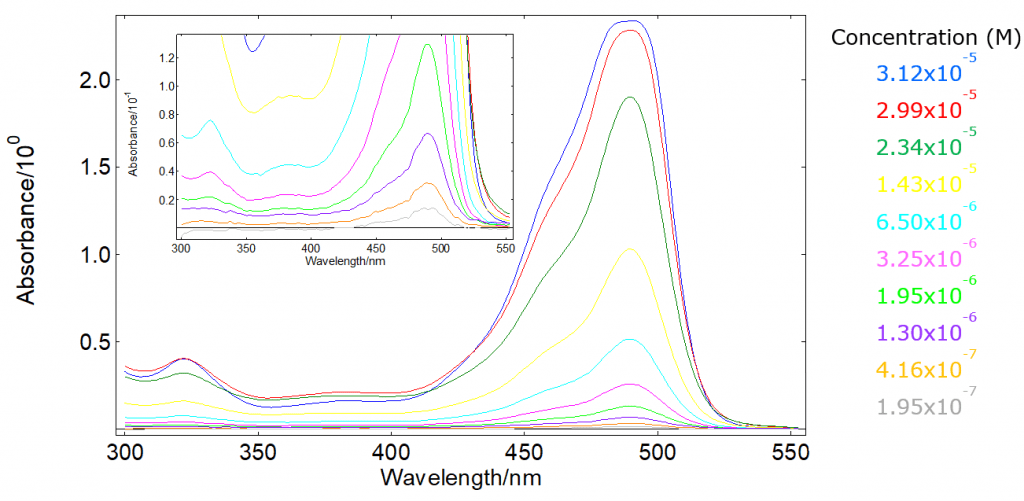Transmission and Absorbance Measurements of Liquid Samples
The absorbance measurements (A) or optical density (OD) of a substance is inherent in all aspects of spectroscopy and follows the Beer-Lambert law1, A(λ)=log[Tref(λ)/Ts(λ)], where Tref(λ) is the transmission of the reference sample and Ts(λ) the transmission of the sample at the measured wavelength.
Instrument and Procedure for Absorbance Measurements
The FS5 Fluorescence Spectrometer is equipped with a silicon detector that allows for transmission and absorbance measurements. Liquid samples can be measured in the standard cuvette holder (SC-05), cuvette holder for coolant circulation (SC-20) and thermoelectrically cooled/heated cuvette holder (SC-25) which can be interchangeably installed in the FS5. Fluorescein solutions were
prepared in phosphate buffered saline (PBS) in 1 cm plastic cuvettes. After the transmission scans of the sample and reference are complete, they can be joined to calculate the absorbance through the absorption wizard in the operating software, Fluoracle.

Results
Figure 1 shows the transmission spectra of fluorescein samples at different concentrations measured in an FS5 fluorescence spectrometer.

The transmission spectra were recorded with a band-pass of 3 nm, a step of 1 nm and integration time of 0.2 s. The repeatability of the measurements was confirmed by reference transmission scans to less than 1% relative deviation. From the transmission spectra, the absorbance spectra of the fluorescein samples in PBS shown in Figure 2 were calculated in the Fluoracle software. The
spectra reveal the dianion form2 of the solution with the absorption peak at 490 nm. The concentration c was calculated according to the Beer-Lambert law from the peak absorbance as c = A / ε l, with the molar attenuation coefficient ε of fluorescein.2

Conclusion
The FS5 Fluorescence Spectrometer enables transmission and absorbance measurements of liquid samples in the wavelength range 230 nm-1000 nm and optical densities of OD 0.01 to OD 2.
References
- Ball, D. W. The Basics of Spectroscopy. (SPIE Press, 2001).
- Sjöback, R., Nygren, J. & Kubista, M. Absorption and fluorescence properties of fluorescein. Spectrochimica Acta Part A: Molecular and Biomolecular Spectroscopy 51, L7–L21 (1995).
Download the full Technical Note on Absorbance Measurements
Download here: Transmission and Absorbance of Liquid Samples
Stay in Touch
If you have enjoyed reading this Technical Note, and want to be the first to see the latest news, applications, and product information from Edinburgh Instruments, sign-up to our infrequent newsletter via the red sign-up button below, and follow us on social media. For more information the LP980 or to enquire about our other high-end instrumentation, why not contact a member of our sales team at sales@edinst.com.








